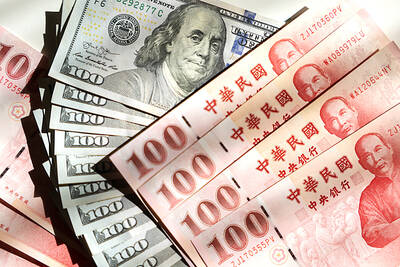Fujifilm Holdings Corp is gaining control of Xerox Corp in a deal that would create a US$18 billion company and see the iconic US corporate giant launching into new lines of business to seek global growth.
The deal would combine Xerox, which has a market value of US$8.3 billion, with a joint venture the company operates with Fujifilm, according to a statement yesterday.
Xerox shareholders will receive a US$2.5 billion special cash dividend, or approximately US$9.80 per share, funded from the combined company’s balance sheet, and own 49.9 percent of the combined company at closing.
The joint venture will also cut 10,000 jobs globally as Fujifilm undertakes a restructuring, the Japanese company said yesterday.
The new combined company, Fuji Xerox, will trade on the New York Stock Exchange and have dual headquarters in Norwalk, Connecticut and Tokyo.
The deal marks the end of independence for a US company whose roots trace back to the start of the 20th century. While Xerox became famous for its hardware, it has fallen on hard times as Canon Inc and other competitors from Asia eroded its dominance and e-mail and other forms of electronic communications took over.
The new company will accelerate revenue growth through its global reach and pursue developments in inkjet, imaging and artificial intelligence, it said.
“The proposed combination has compelling industrial logic and will unlock significant growth and productivity opportunities for the combined company, while delivering substantial value to Xerox shareholders,” Xerox chief executive Jeff Jacobson said in the statement.
Jacobson will become CEO of the combined company.
The deal was reported earlier by the Wall Street Journal.
Fujifilm Holdings, which lowered its forecast for operating income for the year ending on March 31, will cut one-fifth of its global workforce at the joint venture as the Japanese company struggles with an “increasingly severe” market environment.
The company said it will incur a one-time expense of ¥72 billion (US$662 million) over three years.
Fujifilm’s stock yesterday plunged in the final minutes of trading in Tokyo, dropping more than 8 percent to the lowest level since August last year.
Xerox and Fujifilm’s 55-year-old joint venture in Asia is the subject of a recent accounting probe into its practices in New Zealand and Australia, which prompted activist investor Carl Icahn to call for renegotiating or scrapping the agreement.
Icahn last month teamed up with fellow Xerox investor Darwin Deason to urge the company to explore strategic alternatives and shake up its joint venture with Fujifilm. The pair — Xerox’s first and third largest shareholders respectively — called for Xerox to immediately replace Jacobson.
Fujifilm, which generates almost 60 percent of sales from overseas, is pushing to offset waning demand at its printer and copier hardware business by shifting focus to managed-print services and medical imaging.
The deal will make for a more global company, according to Bloomberg Intelligence analyst Simon Chan.
“In the past, Fuji Xerox only operated in the Asia Pacific region, and Xerox targets the Americas and Europe,” Chan said. “With the combined company, they can share cost on research, product development and potentially manufacturing capacity as well.”

MARKET LEADERSHIP: Investors are flocking to Nvidia, drawn by the company’s long-term fundamntals, dominant position in the AI sector, and pricing and margin power Two years after Nvidia Corp made history by becoming the first chipmaker to achieve a US$1 trillion market capitalization, an even more remarkable milestone is within its grasp: becoming the first company to reach US$4 trillion. After the emergence of China’s DeepSeek (深度求索) sent the stock plunging earlier this year and stoked concerns that outlays on artificial intelligence (AI) infrastructure were set to slow, Nvidia shares have rallied back to a record. The company’s biggest customers remain full steam ahead on spending, much of which is flowing to its computing systems. Microsoft Corp, Meta Platforms Inc, Amazon.com Inc and Alphabet Inc are

Luxury fashion powerhouse Prada SpA has acknowledged the ancient Indian roots of its new sandal design after the debut of the open-toe footwear sparked a furor among Indian artisans and politicians thousands of miles from the catwalk in Italy. Images from Prada’s fashion show in Milan last weekend showed models wearing leather sandals with a braided design that resembled handmade Kolhapuri slippers with designs dating back to the 12th century. A wave of criticism in the media and from lawmakers followed over the Italian brand’s lack of public acknowledgement of the Indian sandal design, which is named after a city in the

The US overtaking China as Taiwan’s top export destination could boost industrial development and wage growth, given the US is a high-income economy, an economist said yesterday. However, Taiwan still needs to diversify its export markets due to the unpredictability of US President Donald Trump’s administration, said Chiou Jiunn-rong (邱俊榮), an economics professor at National Central University. Taiwan’s exports soared to a record US$51.74 billion last month, driven by strong demand for artificial intelligence (AI) products and continued orders, with information and communication technology (ICT) and audio/video products leading all sectors. The US reclaimed its position as Taiwan’s top export market, accounting for

INVESTOR RESILIENCE? An analyst said that despite near-term pressures, foreign investors tend to view NT dollar strength as a positive signal for valuation multiples Morgan Stanley has flagged a potential 10 percent revenue decline for Taiwan’s tech hardware sector this year, as a sharp appreciation of the New Taiwan dollar begins to dent the earnings power of major exporters. In what appears to be the first such warning from a major foreign brokerage, the US investment bank said the currency’s strength — fueled by foreign capital inflows and expectations of US interest rate cuts — is compressing profit margins for manufacturers with heavy exposure to US dollar-denominated revenues. The local currency has surged about 10 percent against the greenback over the past quarter and yesterday breached